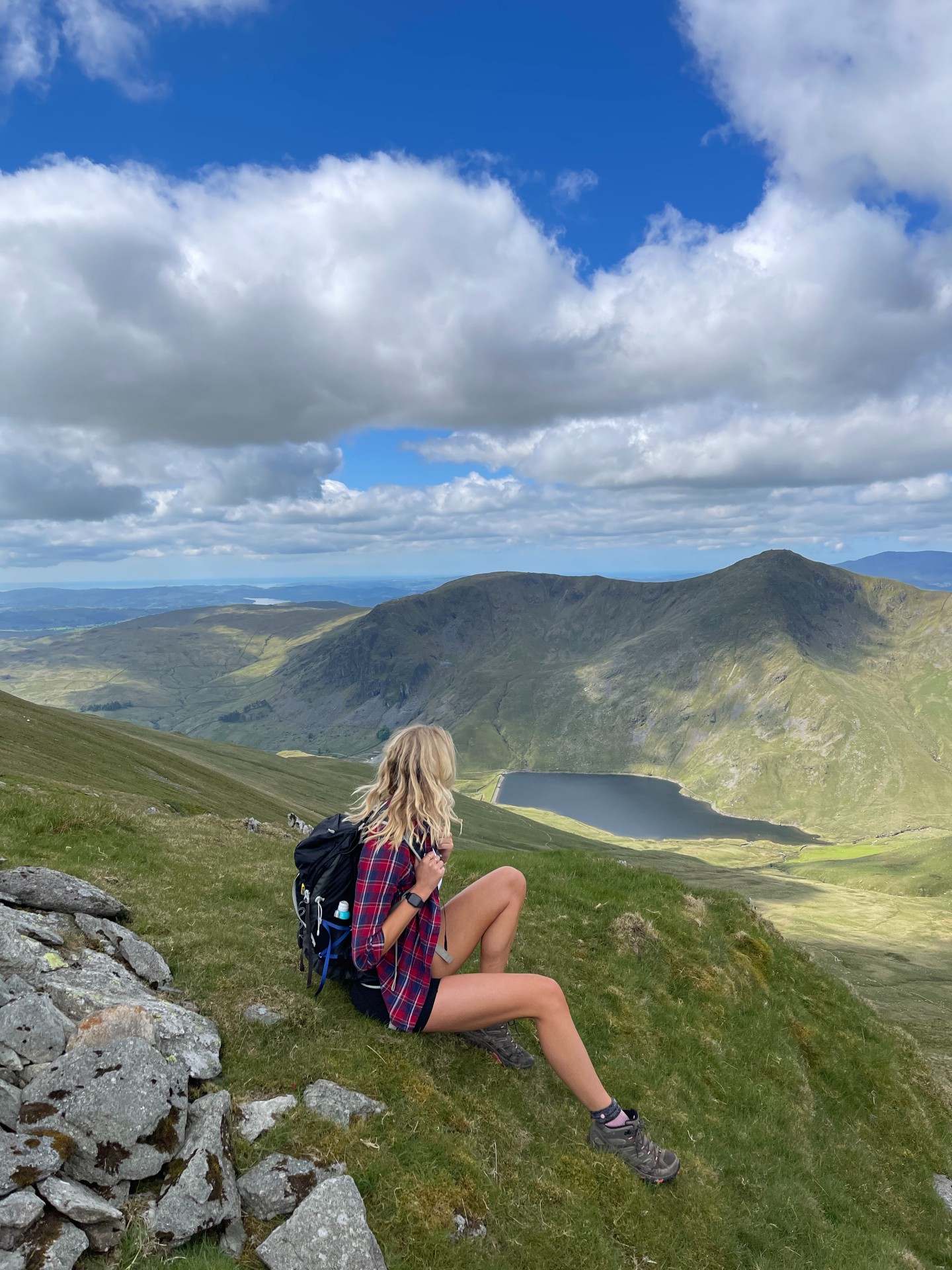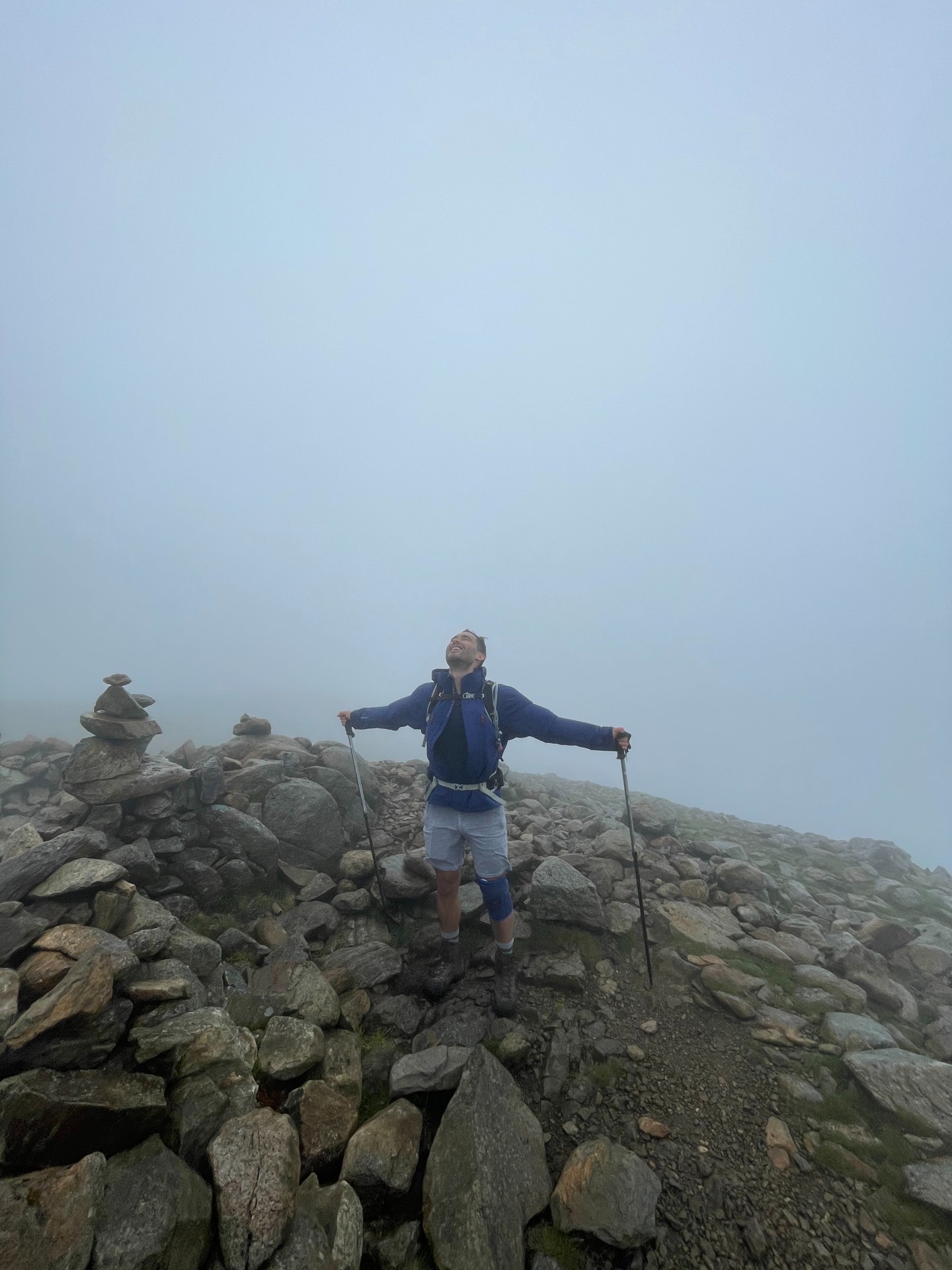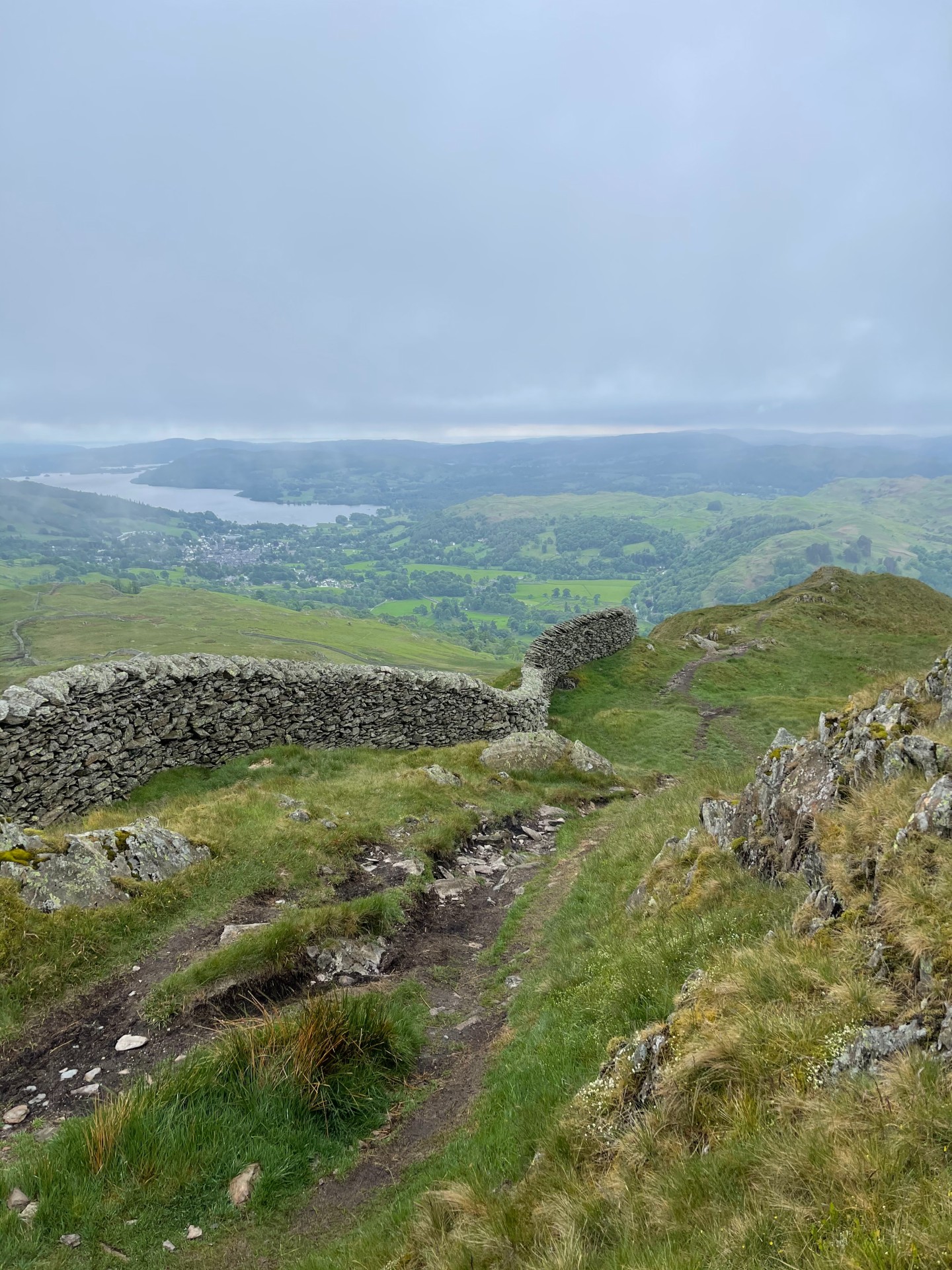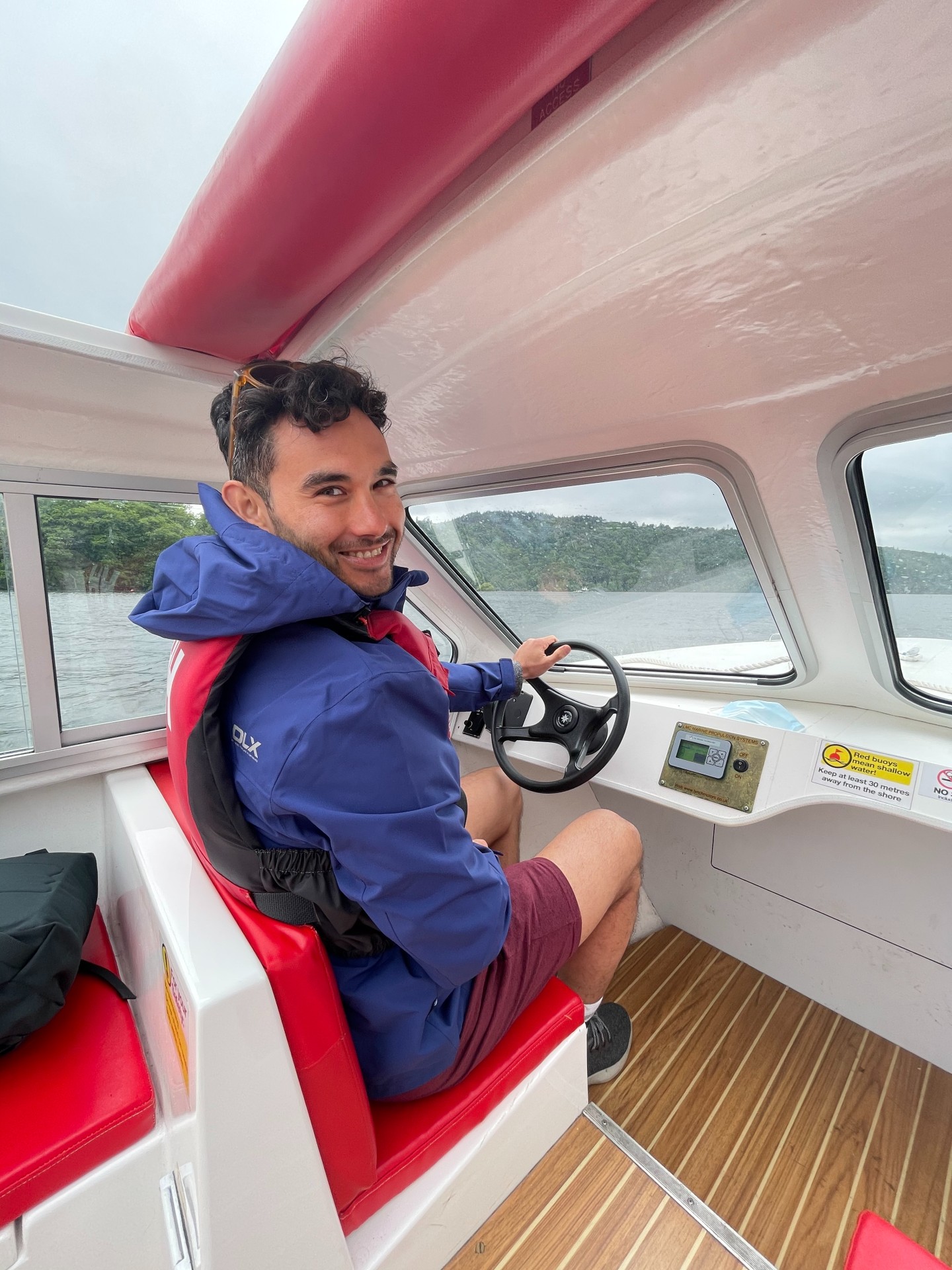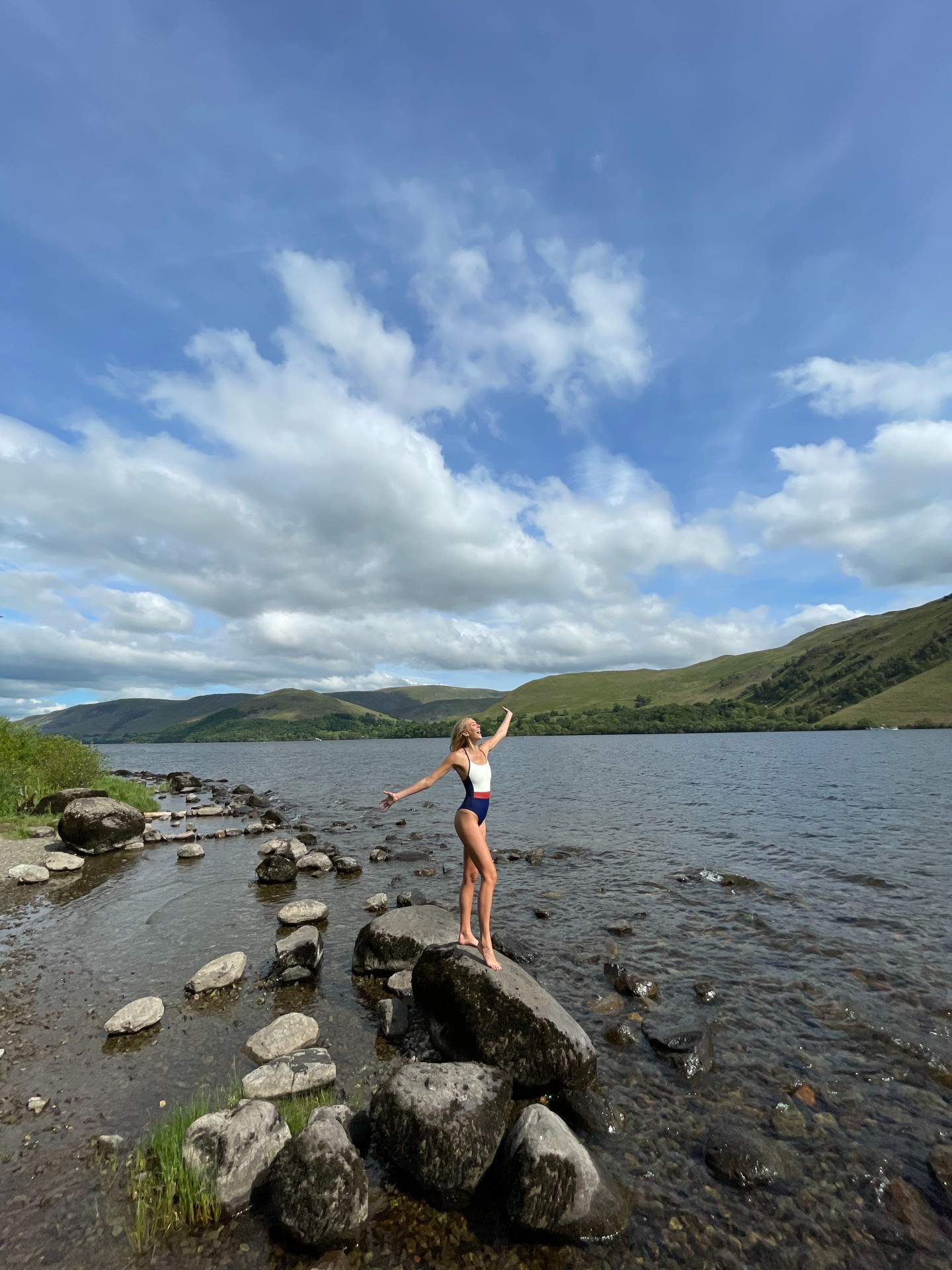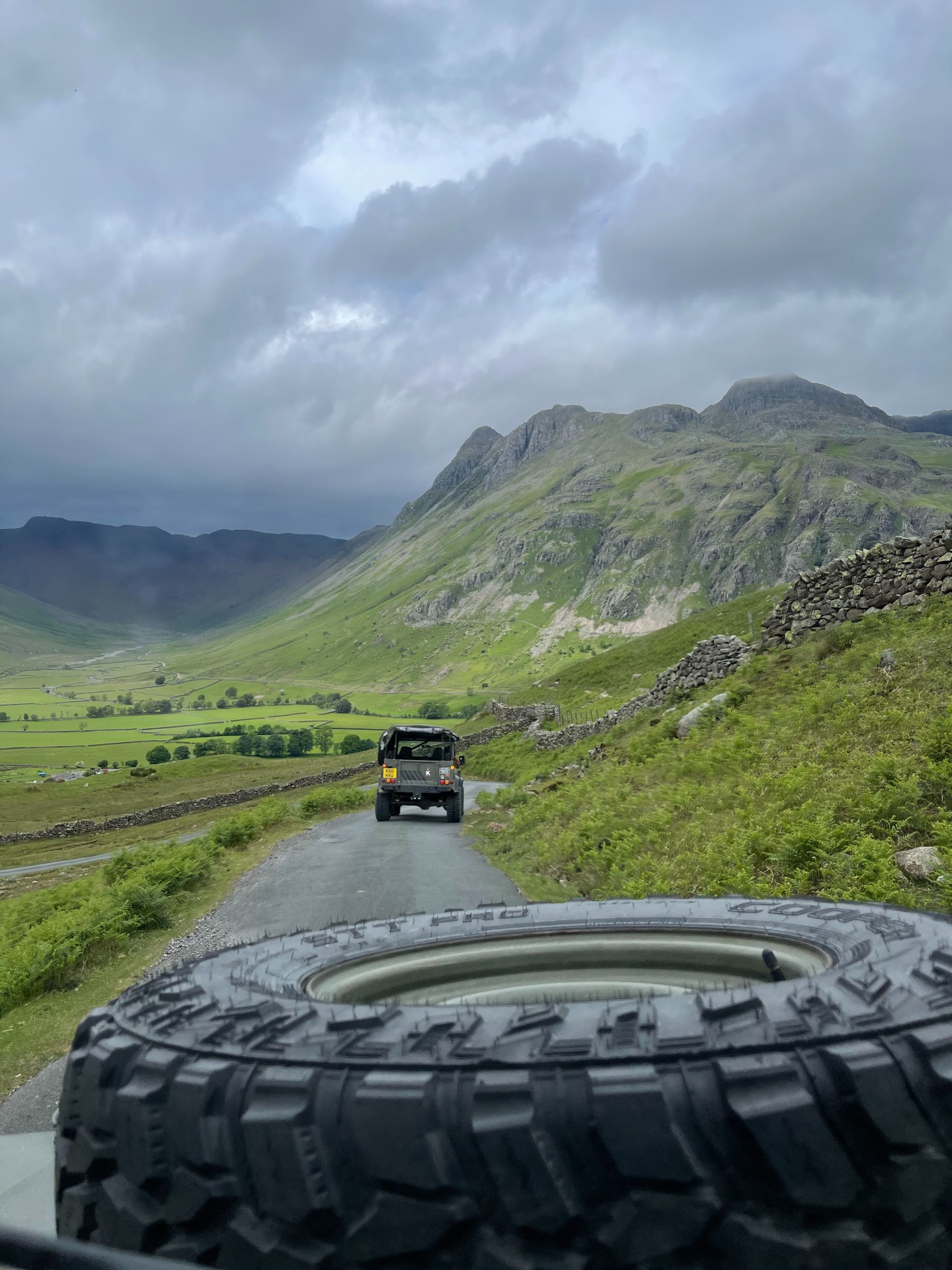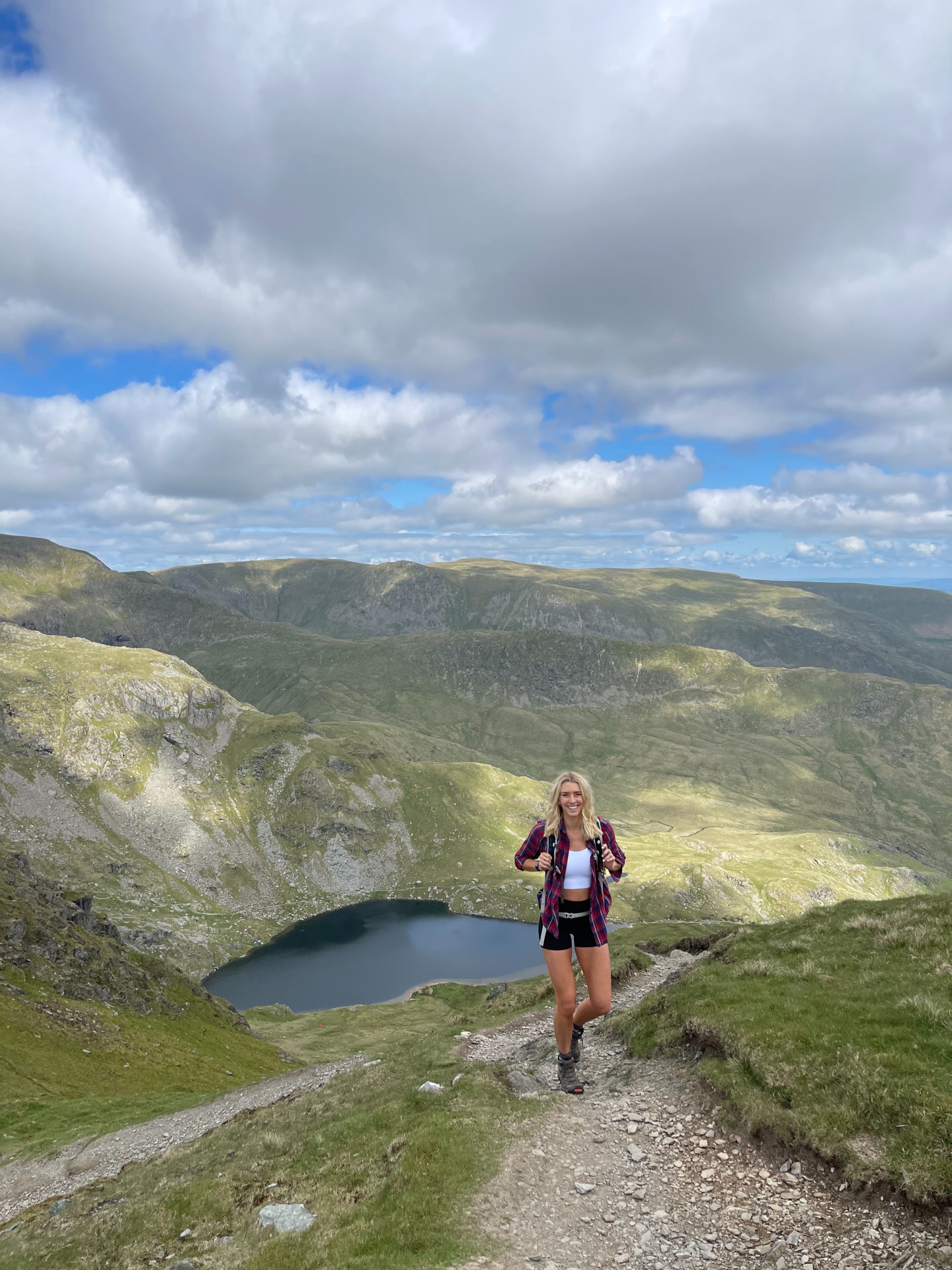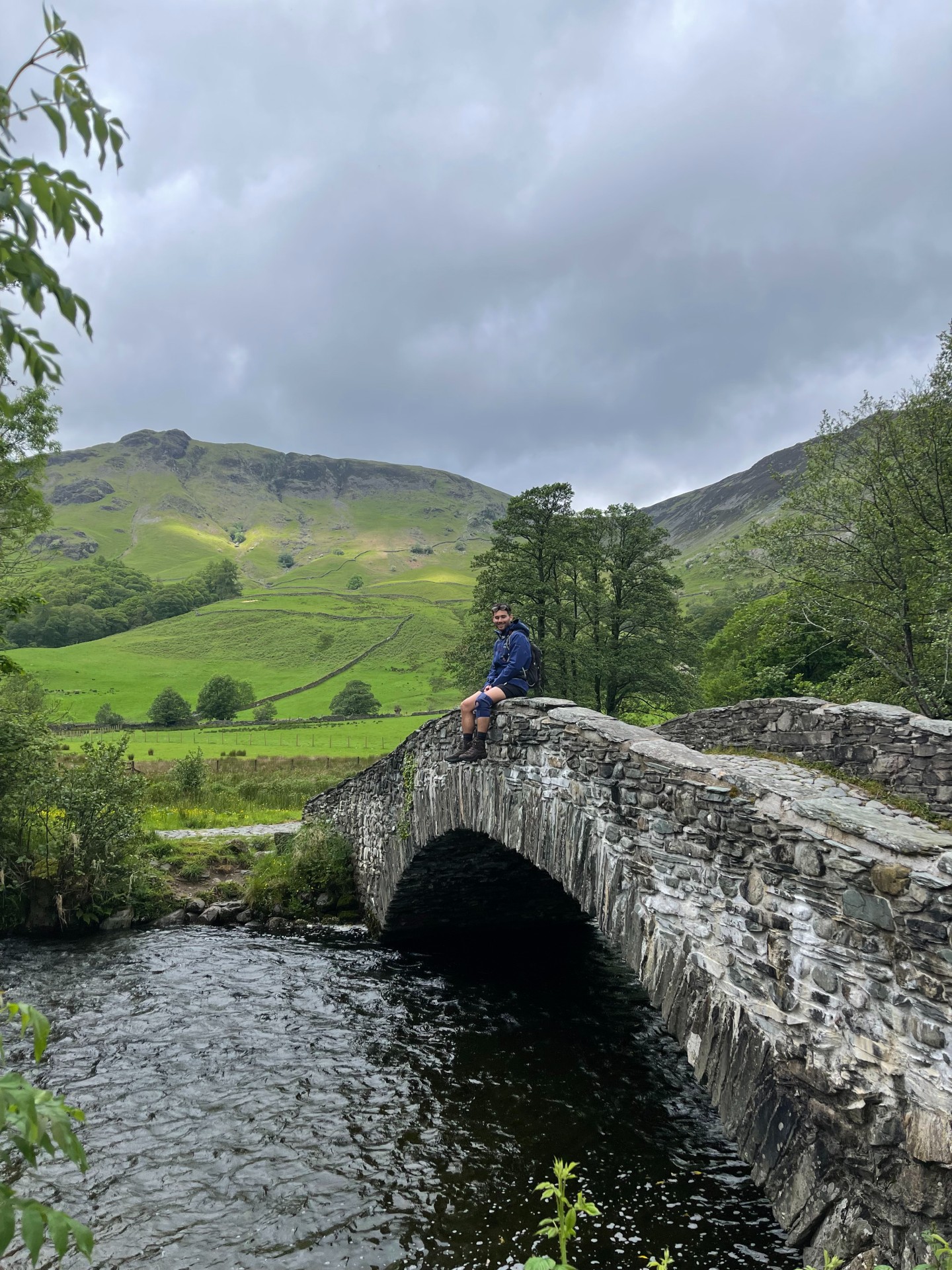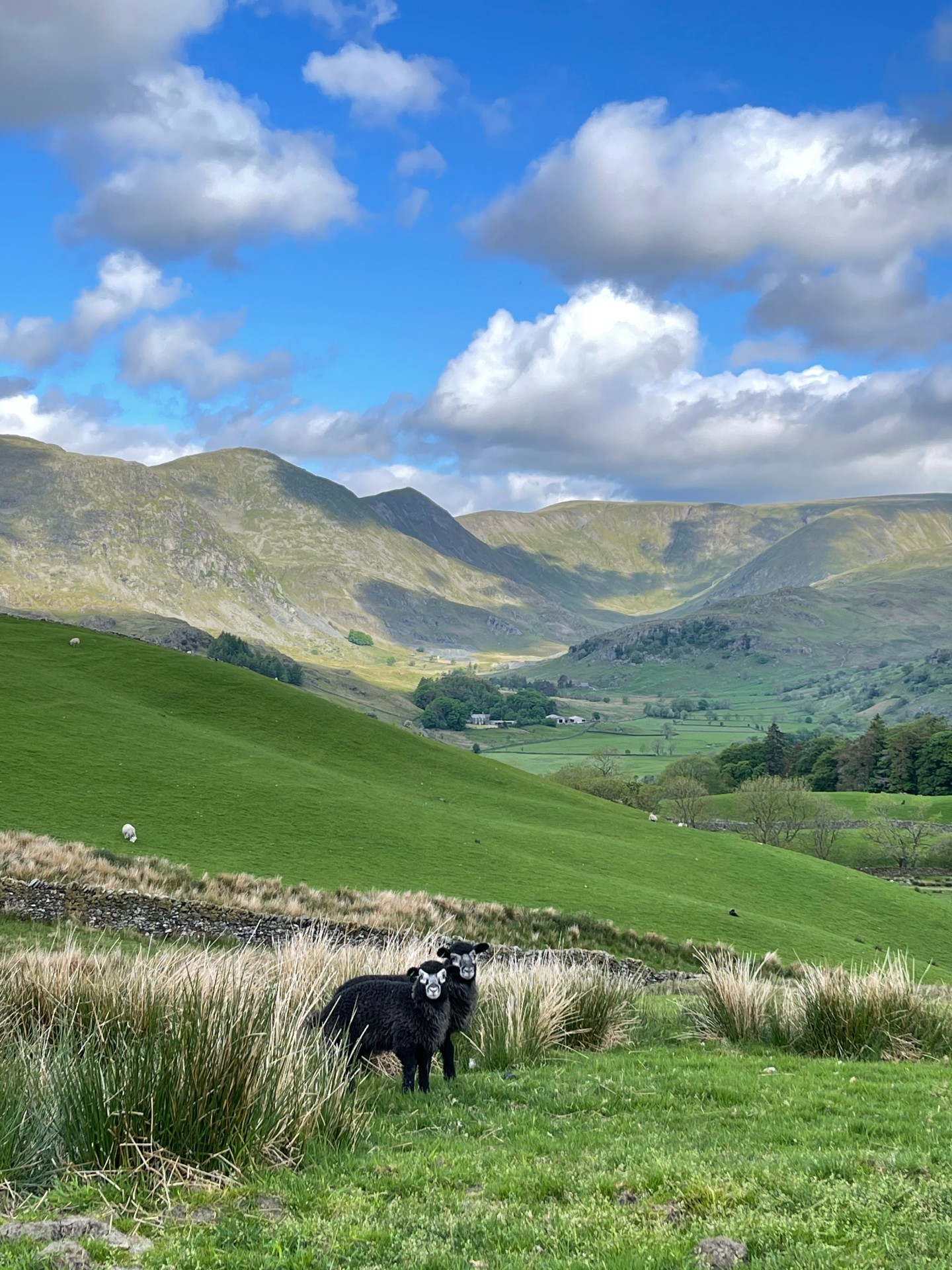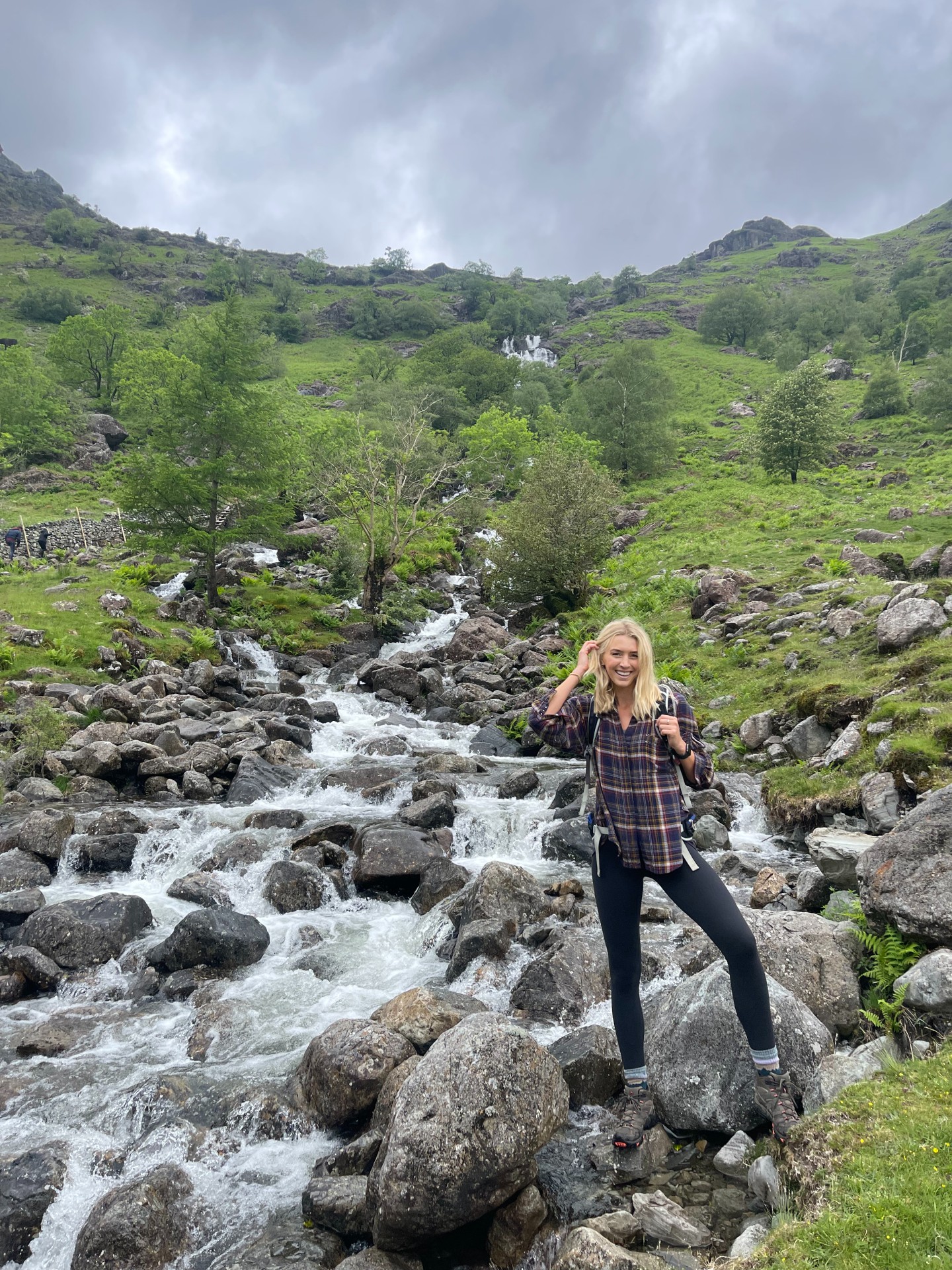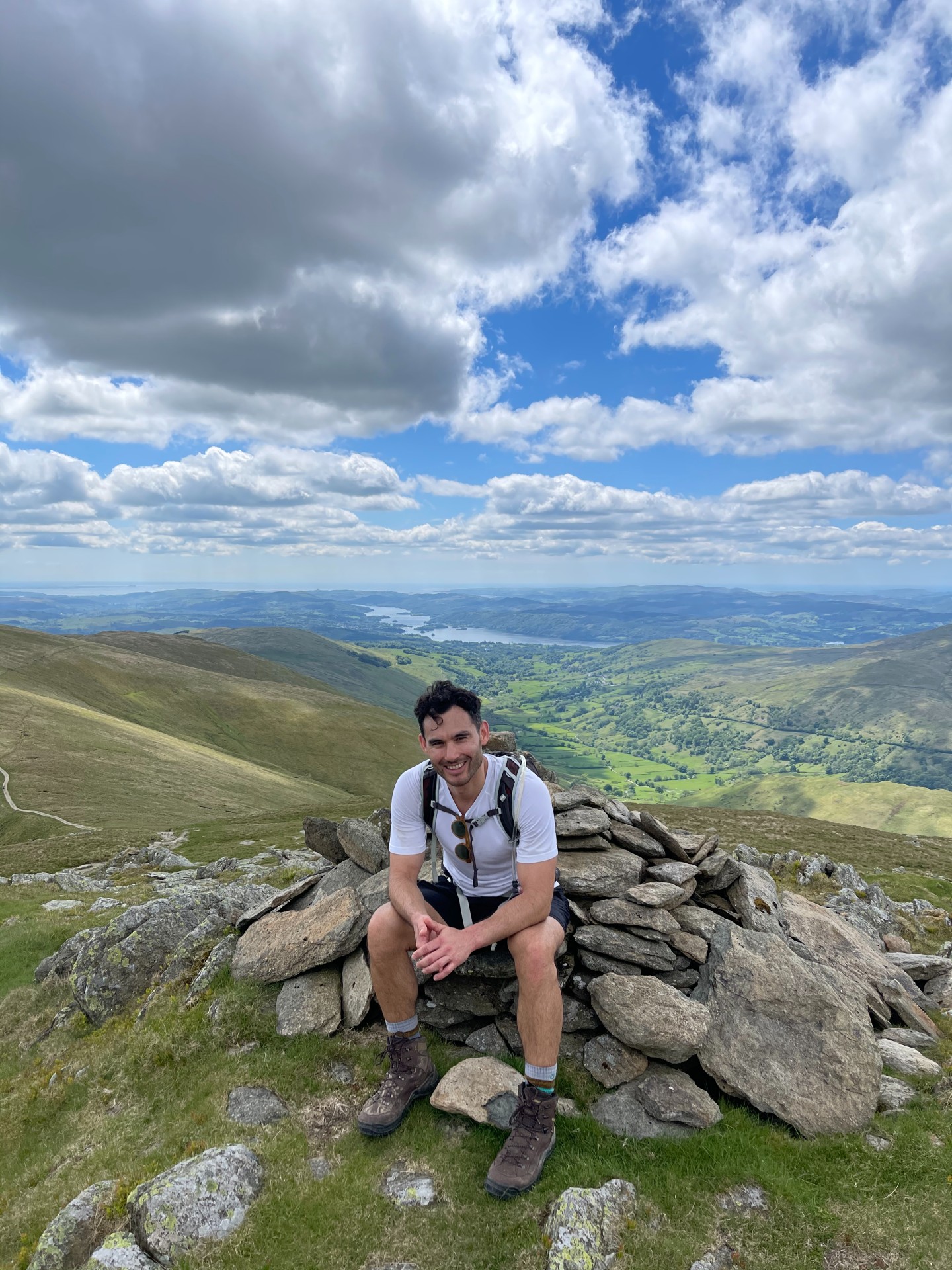The Lake District is one of the most visited regions in England and it is easy to see why. It has some of the most dramatic scenery in the country and is rich with glacial lakes, fell mountains and quaint villages. I have visited The Lakes in the past, but never as someone who is into active travel and hiking. This travel guide will be focused on getting outdoors, connecting with nature and enjoying the natural beauty that the Lake District has to offer. Right, let’s hop in!
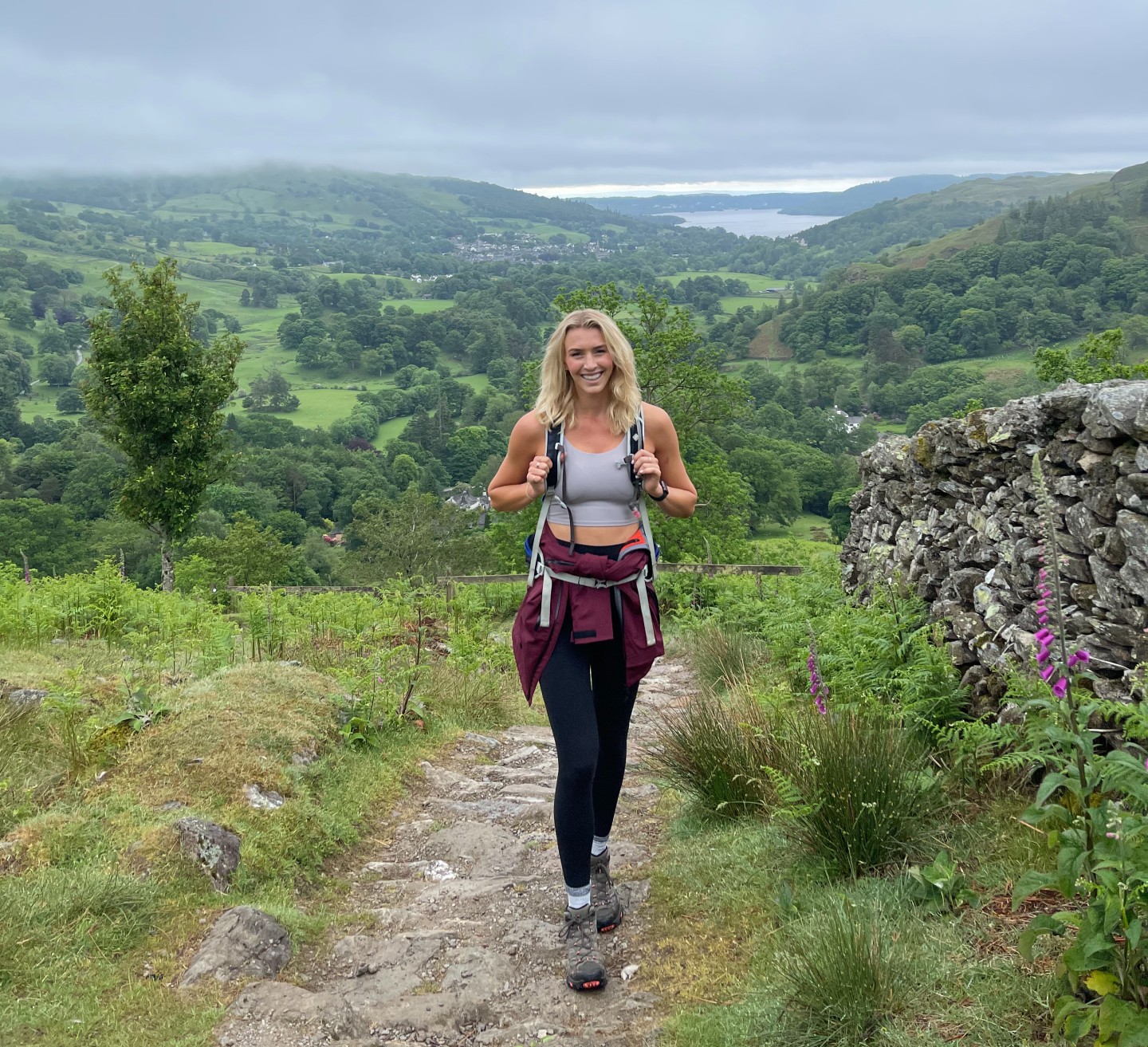
The Practicalities
Getting There & Getting Around
You can access the Lake District via the train or bus routes, but I strongly recommend you visit by car. By far the quickest and easiest way of getting around the region is on four wheels.
Accomodation
I recommend staying in one of the small towns in The Lakes such as Ambleside, Keswick, Windermere or Bowness. There are numerous B&B’s, hotels and cottages. We stayed at Linthwaite House which is a gorgeous country house hotel with views over Lake Windermere. Wherever you choose to stay, I encourage you to book as far in advance as you can, it is such a popular spot that spaces can get snapped up!
Prices
Accomodation and activities can be pretty expensive in the Lakes. However, you can always save money by booking in advance, doing free outdoor activities, choosing self-contained accommodation and cooking for yourself rather than eating out.
How Long To Stay
You can cram a lot into a long weekend in the Lake District and it would be the perfect amount of time to get a taste of what it has to offer, however, if you’re serious about hiking and getting outdoors then a minimum of 5 days would give enough time to really get your teeth stuck into the region.
When To Go
The Lake District is a year-round destination, I have visited in January and June and enjoyed both trips. However, if you’re looking to hike then the summer months allow for easier access to trails rather than carving through snow and ice on the peaks!
Lake District Travel Tips:
Pack For All Weathers
The Lakes have a mountain micro climate and it rains 200 days of the year, so don’t assume that just because it is summer you’re safe from the cold. While it may be warm in the valleys it can be freezing and stormy on the peaks. Pack for ALL weathers, I literally mean hats and gloves in August.
Carry Cash
I recommend carrying coins and change with you to pay for parking, as there are many pay and display machines which don’t take cards.
Be Early
If you want a guaranteed parking spot then it is best to get to popular hikes or attractions early in the day, I’m talking pre-9am at least, especially in peak season. Plus this means you get to enjoy beautiful locations without the crowds.
What To See and Do:
Get On The Water
The Lake District has its name for a reason, it is jam-packed with gorgeous lakes surrounded by rolling mountains. It would be a crime not to get on the water! Why not try renting a boat on Windermere, paddle boarding on Derwent Water or kayaking on Coniston Water?
Get In The Water
Wild swimming is becoming increasingly popular in the Lake District and it is something I did every single day while I was there! In short, wild swimming is the practice of swimming in natural waters, such as rivers and lakes. Here in England it is pretty chilly (read: freezing!) but makes you feel so alive. Some popular wild swimming spots include:
- Rivers: Galleny Force Waterfall, Black Moss Pot & Tongue Pot (all of which you have to do a short hike to access)
- Lakes: Ullswater, Windermere (Millerground), Buttermere, Crummock Water and Coniston Water (all of which you can drive up to and park next to)
My personal favorite swimming spot can be found here. One thing to note is that you can swim in lakes, but not in reservoirs. For example the gorgeous Thirlmere reservoir is a scenic spot where you might love to swim, but cannot for safety reasons.
Take a Scenic Drive
If your legs are tired or you just want to explore on four wheels, then there are some incredible scenic driving routes you can take through The Lakes.
One of my favourite routes to see some of the best of the region is: Ambleside > Keswick > Ullswater > Windermere
This takes in Kirkstone Pass, one of the most famous roads with some pretty damn phenomenal views. Make sure you pull over and take them in!
Other great routes include:
- Keswick to Buttermere via Borrowdale
- Honister Pass to Coniston to Eskdale via Duddon Valley and Wrynose Pass (not for the faint-hearted!)
Go Hiking
If there’s one thing to do in The Lakes it is go hiking. It is perhaps the best known hiking region in England and home to our highest mountain. There are numerous trails across the national park from flat lakeside loops through to challenging horseshoe hikes. I am currently working on a comprehensive & in-depth hiking guide for the region, but if you can’t wait until then – here are some of the most beautiful routes you need to try:
- The Old Man of Coniston (extended to take in Dow Crag)
- Fairfield Horseshoe
- Kentmere Horseshoe
- Newlands Horseshoe
- Helvellyn via Striding Edge (not for the faint hearted!)
And of course, Scafell Pike – the highest mountain in England! Use Mud & Routes, Walk Lakes and AllTrails for maps.
Explore The Towns and Villages
Each of the unique towns and villages inside the National Park have their own attractions and reasons to give them a visit!
- Grasmere. Best known for its famous gingerbread (totally worth the queue), beautiful lake (you can hire a boat on it) and Dove Cottage (the home of William Wordsworth).
- Ambleside. A hiker’s paradise with easy access to numerous trails, Ambleside is also home to Rydal Mount and Gardens, The Bridge House and numerous gorgeous independent shops.
- Windermere & Bowness on Windermere. The tourist capital of the Lakes, so avoid this area if you don’t like crowds! However, they’re great hubs for top notch restaurants, cute boutiques and watersports facilities.
- Keswick. Another hiking haven with easy access to various regions of the national park, Keswick is a great spot for a wide array of shops and cafes, plus it has Derwent Water on its doorstep where you can do a whole range of watersports.
Star Gazing
The Lakes is one of the few “dark spots” left in the UK where you get incredible views of the night sky with little to no light pollution. Some great spots to stargaze include: Ennerdale Water, Grizedale Forest and the Langdale Valley. Park up, get out and look towards the heavens. You will most likely be able to see the Milky Way with your bare eyes!
Grizedale Forest
This expansive woodland between Coniston Water and Lake Windermere is a hub for outdoor activities. Hire a mountain bike and hit the trails, head into the trees on a Go Ape aerial obstacle course or lace up your shoes and go for a hike. Plus it is very family friendly, so if you have little ones there are plenty of activities for them to get involved with!
Refuel
There are some incredible restaurants and cafes in The Lake District, many of which are veggie and vegan friendly. My only recommendation is to pre-book when you can as it can be tough to just walk in and find a space! Here are some personal favourite foodie spots:
Chesters By The River, Skelwith Bridge. A 100% veggie restaurant and takeaway cafe with fresh wholesome meals.
Gandhi’s, Ambleside. Another 100% veggie restaurant with seriously flavourful meals, be sure to try their carrot cake.
Homeground Cafe, Windermere. A popular breakfast and brunch spot, don’t miss their famous hash browns.
Folk Coffee, Bowness. An informal cafe with delicious quick eats, we loved their cauliflower wings.
Fellpack, Keswick. A friendly spot with great plant based options such as Vegan steak, cauliflower carbonara and BBq pulled jackfruit.
Baha, Bowness. Pacific street food and yummy cocktails with a great atmosphere.
Get An Adrenaline Rush
Craving adventure? Then check out the Honister Via Ferratas. A via ferrata is a climbing route that you take on while attached to a harness, it typically employs steel cables, rungs, ladders and more. Honsiter have two options, classic or extreme depending on how daring you’re feeling. No climbing experience is needed and it is a great way to take in beautiful views while challenging your body and mind!
Gyll Scrambling & Canyoning
A Gyll is a mountain stream, and gyll scrambling is ascending one of these streams by climbing waterfalls and jumping into pools of water. Canyoning is descending down one of these streams through abseiling, sliding and jumping. It is incredibly good fun and can be tailored to all abilities, with routes for adrenaline junkies and those who are a little more cautious – I recommend the provider Crags Adventures.
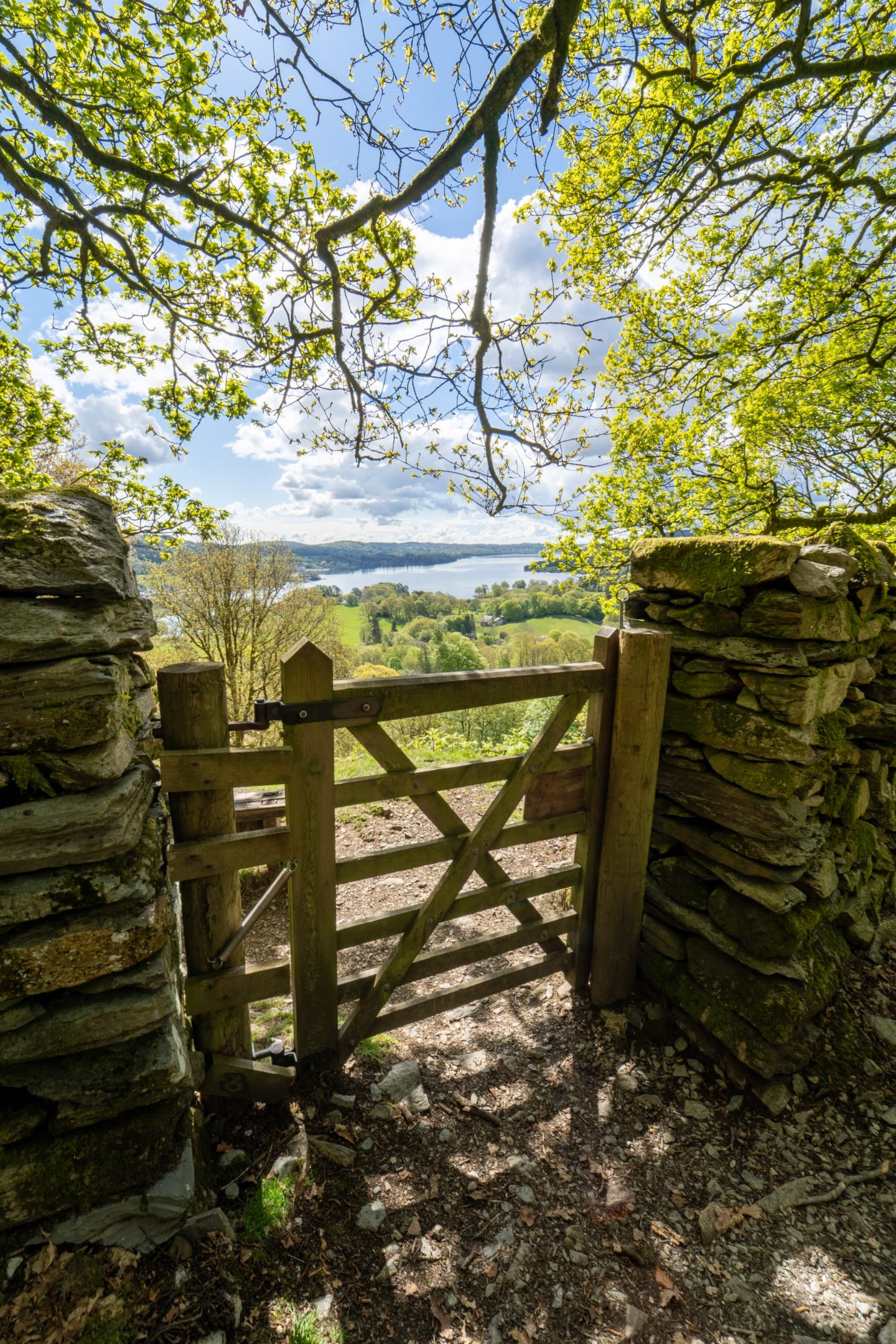
Hopefully with all those recommendations you can easily fill your time while exploring the Lake District. It truly is one of the gems in the English landscape and the perfect destination for those of you who want to get outdoors and connect with nature. Enjoy!
Zanna xx

